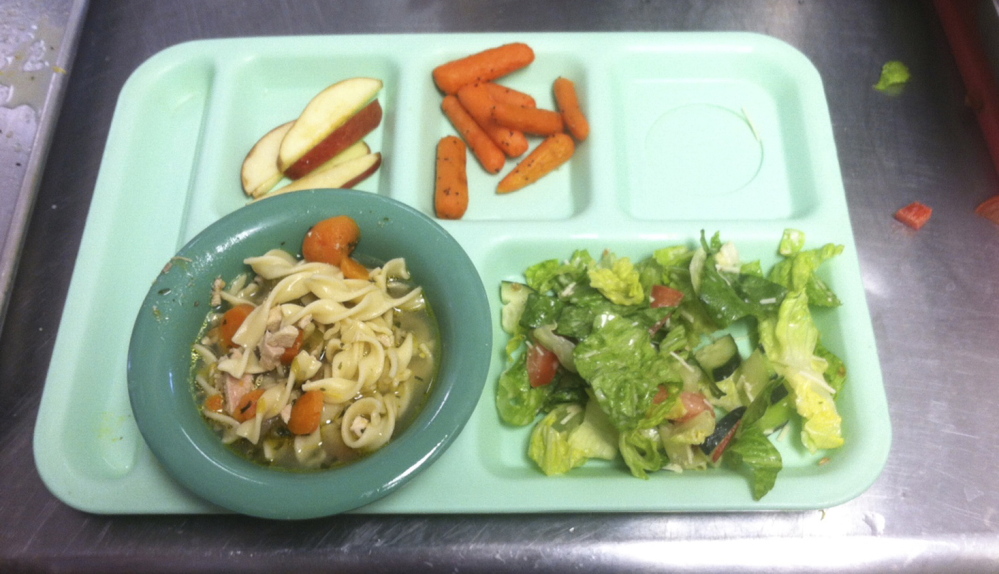No one should have expected that putting more vegetables in front of elementary school students would instantly turn them into an army of broccoli fans. Plenty of food has been thrown out since new federal rules took effect in 2011 requiring students in the subsidized school lunch program to choose a fruit or vegetable each day. Nevertheless, studies find that continued exposure to produce is resulting in more children eating at least some of it.
That’s worth a certain amount of wasted food. The new lunch rules, pushed by the Obama administration and passed by Congress, provide better nutrition and introduce more students to healthful eating habits that they will, it’s hoped, carry into adulthood.
Still, the program is afflicted by rigid, overreaching regulations that defy common sense. Schools must provide items from five food groups, including a fruit and a vegetable, every day. Students must choose three items, even if they’re not hungry enough for all of them, and at least one must be produce. But fruits and vegetables rank as the least popular items, so requiring schools to offer one of each for each student practically guarantees that an enormous amount of fruits and vegetables will go to waste.
Even worse are the rules about what kinds of produce must be offered and in what form. They make it nearly impossible, for example, to hide the vegetables in soups or lasagna, where they might be more palatable to students. It took a long, intense lobbying effort for schools to get permission to serve smoothies; even though cafeterias are encouraged to serve yogurt and fruit, they weren’t allowed until just recently to combine them into a healthful drink.
The federal rules even prohibit students from taking food out of the cafeteria to eat later.
No wonder so much ends up in garbage cans. In the Los Angeles Unified School District, as the Los Angeles Times recently reported, it adds up to $100,000 in wasted food each day.
Congress is supposed to reauthorize the school lunch bill in 2015, and there are many changes it should make. Though the law should continue to require all students to take a fruit or vegetable, it should allow them to take only as much food as they want. Children should be able to pick two fruits or two vegetables in a day, which they can’t do now, and eat their leftovers later. Schools should be free to mix vegetables together in appealing and healthful dishes. Lawmakers need to think more like budget-conscious parents and less like detail-obsessed regulators.
Editorial by the Los Angeles Times
Send questions/comments to the editors.



Success. Please wait for the page to reload. If the page does not reload within 5 seconds, please refresh the page.
Enter your email and password to access comments.
Hi, to comment on stories you must . This profile is in addition to your subscription and website login.
Already have a commenting profile? .
Invalid username/password.
Please check your email to confirm and complete your registration.
Only subscribers are eligible to post comments. Please subscribe or login first for digital access. Here’s why.
Use the form below to reset your password. When you've submitted your account email, we will send an email with a reset code.